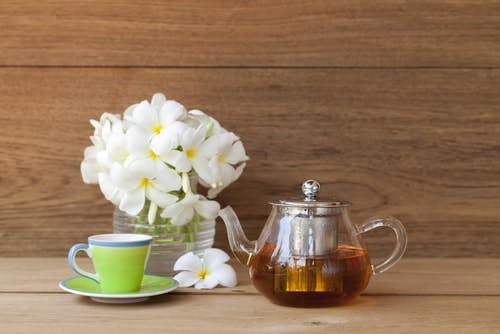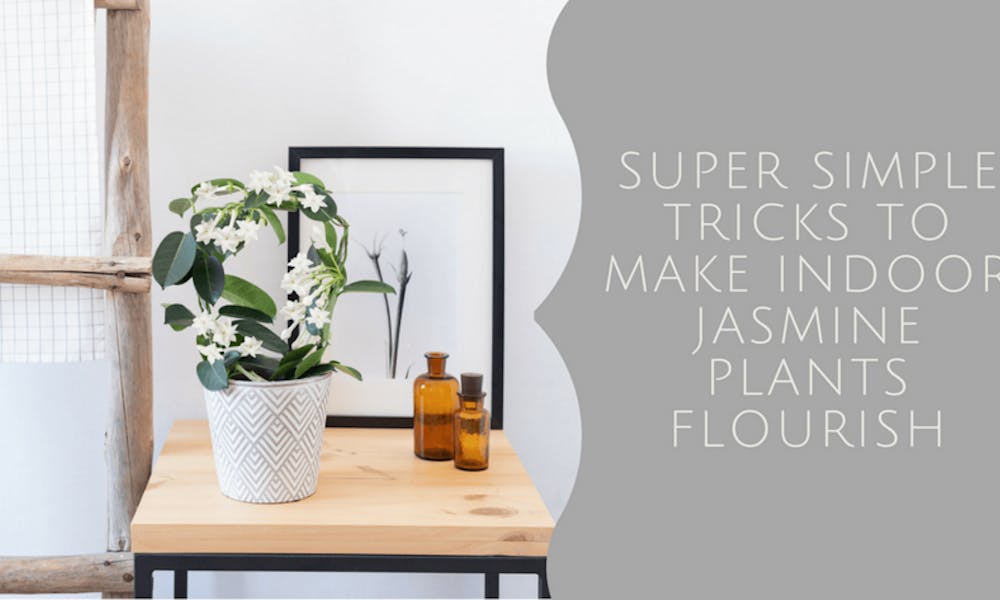Jasmine is a plant that combines a bit of everything. With grace, elegance and an amazing scent, there’s plenty to love about these flowering beauties. Most of the time Jasmine is happiest growing outside but that doesn’t mean it can’t be enjoyed as an indoor treat too. However, there are few tricks to remember when it comes to indoor Jasmine plants.
Choose the right Jasmine plant
Most indoor Jasmine plants grow around a hoop or trellis due to Jasmine being a vine unlike other houseplants which grow free standing but not all Jasmine is equal and among the many different varieties of this exotic plant only a few will flourish with ease when being grown or kept indoors. Luckily those that do, need broadly the same care as each other and don’t need many extra requirements taken care of.
These are our top suggestions for your indoor Jasmine plant:
- Jasminum polyanthum – Sometimes known as White or Pink Jasmine, is fast growing and strong smelling. The only thing to take into consideration, is that it’s a plant that really loves to climb (it can be grown to cover outside walls for example), so be sure to prune it a bit extra.
- Jasminium sembac – Often known as Arabian Jasmine, this is a strongly fragrant variety that is used for making tea but is also ideally suited for growing indoors and is less of a climber than White Jasmine.
- Jasminum officinale – This is known as Common Jasmine or Poet’s Jasmine and is another great choice for your indoor plant as it produces a very large quantity of flowers.
- Stephanotis floribunda – While this is not strictly part of the Jasmine family it’s sometimes known as Madagascar Jasmine thanks to it’s brilliant White Flowers and exotic scent.

Position and potting mixture
Jasmine can be grown either in a normal pot, or if you’re feeling more extravagant a hanging basket, with regular soil or with a bark mixture.These plants love light (6 hours of it a day where possible) and should get as much as they can. The room it’s in should be well lit and try to make sure it gets a good amount during the spring and summer months.
It’s also important to not let it suffer too much drying out during winter due to central heating and radiators. Positioning it in an area with natural airflow should prevent it from suffering too many ill effects of indoor heating or air conditioning.
Water & nourishment
Jasmines like things wet but not too wet. They need regular watering but you should always let it dry out before its next drink (the soil should be moist but not wet). As with many plants you don’t need to water as frequently in the winter months.
You don’t need to fertilise your Jasmine plant too often, although if you do try to use a weakened house plant food and only during its growing season during spring and summer. Too much fertilisation can put strain on the plant as it will flower for longer than it should.

Don’t let it get too big too fast
Re-potting a Jasmine plant is often necessary as it gains size and maturity but this should be done sparingly or it will grow uncontrollably. Remember Jasmine is a climber in the wild, so it’s better to let it grow gradually at its own pace.
Try to re-pot in a gradually larger pot once a year during spring time to fit its natural growing cycle. It’s also a good idea to prune the plant to help it maintain its shape at the end of the growing season.
Jasmine may be wild at heart, but can be easily tamed with the right steps of care. The results are well worth it as you enjoy its natural beauty, bushy abundance and perfumed fragrance all year round.
Refresh a home or surprise in style with an exotic plant delivered right to someone special’s door with FloraQueen’s plant delivery service. Make your celebrations greener with amazing plants.
